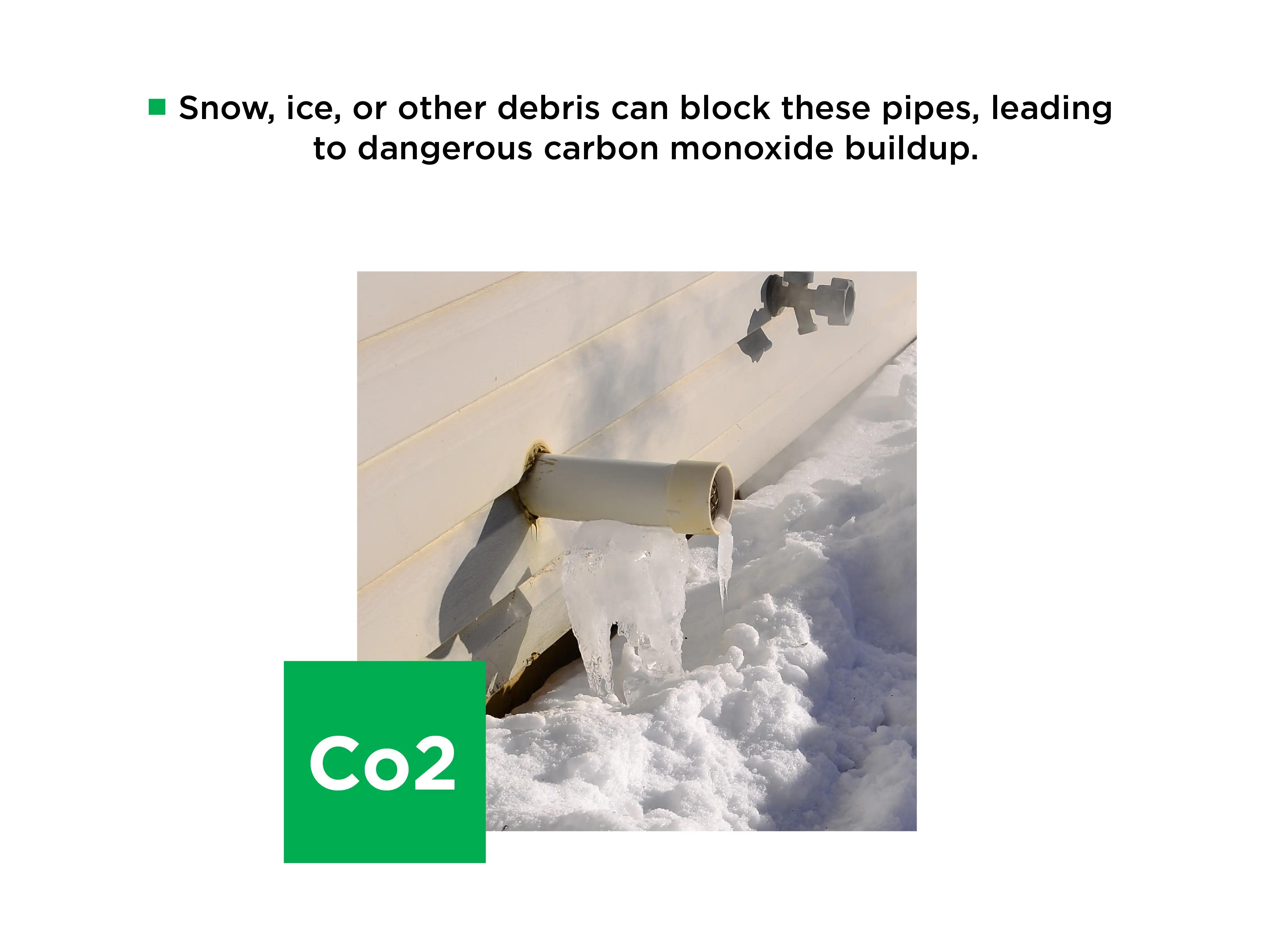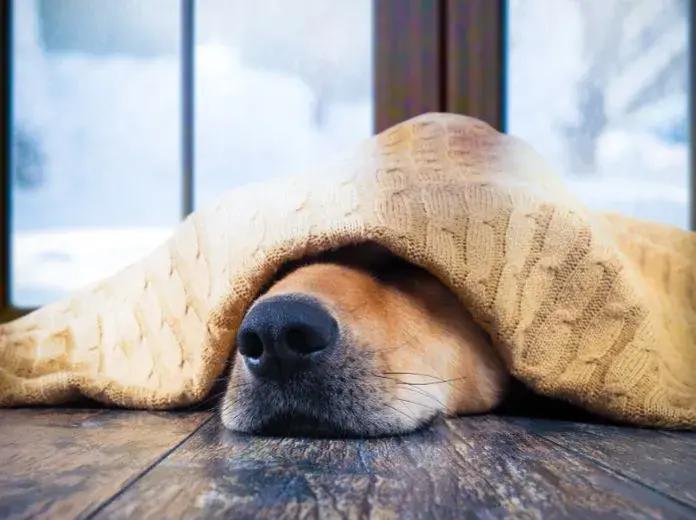Fast, Free Shipping
Every Size
Made in the USA
Shop by

When a sudden cold snap strikes, your furnace and HVAC system become critical to keeping your home warm and safe. But extreme winter weather can push your heating system to its limits, leading to higher energy bills, potential system failures, or even safety hazards.
With the right preparation, you can winter-proof your home, protect your HVAC system, and ensure your family stays cozy through any storm. Here’s your comprehensive guide to cold snap HVAC tips and emergency preparation.
Cold snaps can wreak havoc on your heating system, especially if you’re not prepared. Protect your HVAC system with these quick actions:
These HVAC freezing up in winter prevention tips will help you avoid emergency repairs and keep your system running smoothly.
With energy costs rising, improving HVAC efficiency is more important than ever during a cold snap. Use these HVAC winter maintenance tips to save money and stay warm:
Investing in these energy-efficient upgrades not only lowers your utility bills but also ensures your HVAC system lasts longer.

Preventative maintenance is your first line of defense against HVAC issues during winter storms. Include these tasks in your HVAC winter tune up plan:
Staying ahead of maintenance ensures you won’t be caught off guard when the next cold snap hits.
Answers to how often should I change my furnace filter?
How to change your furnace filter
5 Clogged furnace filter symptoms

Safety should be a top priority during extreme cold. Use these tips to protect your home and family:
By following these HVAC winter tips, you can enjoy peace of mind knowing your home is safe.

Extreme weather can bring power outages, frozen pipes, and other challenges. Be ready with a cold snap emergency kit:
Preparation is key to staying comfortable and minimizing disruptions during a winter storm.

Keep your HVAC system in top shape with this quick-reference checklist:
Get an HVAC Care Plan to prevent issues early.
In the winter season, it is crucial to regularly change your furnace filter to ensure optimal performance and maintain indoor air quality. Experts recommend replacing the furnace filter every 1-3 months, depending on various factors such as the type of filter used, the level of furnace usage, and the air quality in your home. Regularly changing the furnace filter not only helps to prevent dust, allergens, and debris from circulating in the air but also promotes efficient airflow, reduces energy consumption, and prolongs the lifespan of your furnace.
It's best practice to set your thermostat to at least 68 degrees Fahrenheit. This keeps your furnace running without overworking it in extreme cold.
You should run your furnace continuously in extreme cold to prevent freezing. It's also crucial to monitor it closely and call a professional if you notice anything unusual. Stay warm and safe!
Yes, certain models like high-efficiency condensing furnaces perform better due to their heat exchange system's design and insulation. Always consult an HVAC professional for advice.
If your furnace breaks down, you've got options. Use space heaters, but carefully to avoid fires. Heat only necessary rooms and bundle up. Electric blankets also help. Remember, it's temporary until the furnace is repaired or replaced.
To ensure your furnace's optimum efficiency in Arctic-like conditions, you've got to be proactive. Regular maintenance, including filter changes, is vital. Don't neglect thermostat checks and annual professional inspections for a high-performance furnace.
As winter's icy grip tightens, ensuring the efficient operation of your furnace becomes increasingly paramount to maintaining a comfortable living environment. The ability of your furnace to perform under extreme cold conditions can be considered the litmus test of its overall health and reliability. However, keeping a furnace running in such conditions is not always a straightforward task. It requires a comprehensive understanding of the device, its maintenance needs, and how cold weather can impact its performance.
Implementing five key maintenance tips can significantly enhance the efficiency and longevity of your furnace, particularly during periods of extreme cold. Emphasizing regular filter replacement ensures optimal airflow while reducing energy consumption. Scheduling inspections allows for early detection of potential issues, therefore preventing costly future repairs. Regularly practicing these tips will contribute to a reliable and efficient furnace operation.
As we navigate the complexities of home heating systems, one question that often arises centers on the operational limits of a furnace, specifically, how cold is too cold for a furnace to function optimally. The answer to this question is not as straightforward as one might anticipate, as it depends on a myriad of factors such as the type and model of the furnace, the insulation grade of the house, and the outdoor temperature. However, comprehending these variables and their role in furnace performance can result in more efficient energy use, potential cost savings, and ultimately, a more comfortable living environment.
Regularly monitoring and understanding furnace temperature limits is crucial for maintaining optimal efficiency and safety in heat treatment processes. Effective temperature regulation can prevent furnace overheating, thus preventing damage and ensuring longevity. Adequate knowledge about temperature limits contributes to improved safety, efficiency, and cost-effectiveness in furnace operations. Therefore, understanding these limits is a prerequisite for proper furnace maintenance.
In the realm of home heating systems, a frequently encountered conundrum is the inability of a furnace to maintain its functionality during periods of extreme cold weather. This may seem counterintuitive, as the primary role of a furnace is to provide warmth, particularly when external temperatures plummet. However, several factors, ranging from technical to environmental, can affect the performance of your furnace, causing it to function below par or even shut down in severe cold weather.
In the harsh reality of extremely cold weather, numerous operational challenges can significantly impede the performance and efficiency of a furnace. Furnace efficiency directly correlates with the temperature impact, with lower temperatures often resulting in reduced operational capacity. Understanding these challenges is critical to maintaining optimal furnace function and ensuring continuous, reliable heat even in the most severe winter conditions.
As the chill of winter sets in, many homeowners find themselves questioning the efficiency and safety of their heating systems. One common concern that emerges is whether a furnace should run continuously during cold weather. This question is not without merit, as it touches on crucial aspects such as energy consumption, furnace longevity, and overall home safety. While it is natural for furnace usage to increase during colder months, constant operation may signify underlying issues that require attention. It's essential to discern between normal operation and potential warning signs.
To comprehend why a furnace might operate incessantly during low temperatures, it is essential to first understand the fundamental mechanics of a furnace's operation in cold weather conditions. Key furnace efficiency factors include the unit's overall condition and insulation. Proper winter maintenance tips, such as routine checks and filter replacements, can significantly enhance the furnace's performance and prevent it from running non-stop.
In the realm of HVAC system operation, an intriguing question often arises regarding the potential impact of extreme cold on a furnace's ability to function properly, specifically, whether it can cause a phenomenon known as short cycling. Short cycling, defined as the process where a furnace turns on and off rapidly over a short period, can result in inefficient heating, increased wear and tear, and potentially higher energy bills. As a result, it is crucial to understand the factors that can contribute to short cycling, including the possibility of extreme cold weather conditions.
To comprehend the phenomenon of furnace short cycling, it is essential to first understand what it entails and the conditions that lead to its occurrence. Furnace short cycling is typically a symptom of underlying issues that need to be addressed. Exploring cycling causes and investigating short-cycle solutions can help diagnose and rectify the problem, ensuring the furnace operates efficiently.
The temperature range of a furnace, especially its lower limit, is an intriguing topic with a host of practical implications. This lower limit is not merely a trivial number, but a crucial parameter that affects several aspects such as energy efficiency, operational costs, and the lifespan of the furnace. Determining this lower threshold, however, is not as straightforward as it may seem. A multitude of factors including furnace type, fuel source, and targeted application come into play. As we explore this subject further, we will unravel the complexities and nuances involved in establishing this critical limit, providing you with a comprehensive understanding of the subject matter.
Delving into the concept of 'Furnace Temperature Range', it is essential to understand that the temperature at which a furnace operates can significantly vary, depending on its specific type and purpose. Accurate temperature calibration is vital for maintaining furnace efficiency. The range is established during design, and adjusting outside this range may compromise functionality and safety.
As temperatures drop, the question that often arises among homeowners is, "Why is my HVAC system not keeping up with the cold?" This quite prevalent issue could be attributed to a variety of factors, ranging from minor issues like a dirty filter to more substantial concerns such as a malfunctioning component or an underpowered system for the size of the home. Unraveling the crux of this problem necessitates a comprehensive understanding of the HVAC system's functioning and the potential disruptions that could occur within it. It is this exploration and eventual diagnosis that will enable us to optimize our home's heating capabilities, ensuring a comfortable environment despite the cold outside.
In dealing with HVAC systems, one may encounter a variety of performance issues, especially during cold weather, which can significantly affect the system's efficiency and operation. Common issues include Thermostat Troubles and Ductwork Dilemmas. A malfunctioning thermostat may not accurately control temperature, while issues with ductwork can lead to uneven heating and reduced system efficiency.
The operation of a furnace is a complex process, involving intricate machinery and design. It's not uncommon to ponder if ceaseless running could lead to wear and tear, or conversely, if regular intervals of rest could potentially extend its lifespan. An exploration of this topic would involve a detailed look at the mechanics of a furnace, energy consumption implications, and the overall impact on its longevity.
How does your furnace operate, and why is understanding this process essential for homeowners? Furnace efficiency directly impacts its lifespan, hence understanding the operation is crucial. Efficient furnaces consume less energy, reducing utility bills, and prolonging their lifespan. Homeowners, through recognizing signs of inefficiency, can schedule timely maintenance, enhancing both furnace efficiency and lifespan significantly. Knowledge of furnace operation is thus indispensable for homeowners.
In the realm of HVAC systems, one of the more commonly overlooked issues is that of short cycling. This phenomenon, which involves your thermostat causing your heating or cooling system to turn on and off rapidly over short periods, can lead to a host of problems including increased energy consumption, reduced comfort, and even significant system damage. However, identifying short cycling is not always an easy task, as its signs can be subtly hidden in your system's behavior.
What exactly is short cycling in thermostats, you may wonder? Short cycling is a term used to describe a situation where a thermostat frequently turns on and off in an unnaturally rapid sequence. This phenomenon can be traced back to various Cycling Causes and is often identified by specific Short Cycling Symptoms, which we will delve into in the following sections.
In the realm of home heating, one topic that frequently surfaces is the optimal temperature setting for a furnace, particularly when the dwelling is unoccupied or its inhabitants are asleep. Many homeowners grapple with determining just how low they can set their furnaces without causing damage to the system or compromising the comfort and safety of their homes. This question, seemingly simple, is quite complex, hinging on a multitude of factors such as the quality of home insulation, the outdoor temperature, and the specific characteristics of the heating system itself.
How crucial is it to understand the fundamental aspects of furnace temperature? Knowledge of Temperature Regulation significantly impacts Furnace Efficiency. A well-regulated furnace operates optimally, maximizing heat output while minimizing energy consumption. Understanding the basic principles of furnace temperature, including the ideal range and fluctuation limits, is essential to maintain efficiency and prolong the life of the equipment.
As we delve deeper into the winter season, the question of how long a furnace should run in cold weather becomes increasingly pertinent. Various factors contribute to this, including the type of furnace, the size of the space being heated, and the specific temperature outside. Understanding the appropriate run time for your furnace not only ensures a comfortable and warm living environment but could also substantially impact energy efficiency and cost. However, ascertaining the optimal run time for your furnace in cold weather isn't as straightforward as it seems, inviting further exploration into this complex yet crucial subject.
To comprehend the run time of a furnace, one must first grasp the basic function and operation of this integral home heating system. Understanding the run time efficiency and the furnace lifecycle can provide valuable insights. Efficient run time can prolong the lifecycle of the furnace, ensuring consistent warmth in cold weather, while potentially reducing energy costs.
The appropriate overnight heating temperature is a topic of significant interest, as it touches on matters of energy efficiency, economic prudence, and personal comfort. There is a common belief that keeping the heating on low all night is more cost and energy-efficient than turning it off and reheating the home in the morning. However, others contend that leaving the heating on overnight, even at a lower temperature, is wasteful and unnecessary.
To comprehend the optimal overnight heating temperature, one must consider several factors including personal comfort, energy efficiency, and outside weather conditions. Temperature impact plays a vital role in ensuring a comfortable sleep. A moderate temperature setting, not too high nor too low, ensures energy conservation while also ensuring the body remains relaxed, fostering deep, restorative sleep.